Air Conditioning of a Room with Heat Source Simulation
$80.00 Student Discount
- The problem numerically simulates the Air Conditioning of a Room with a Heat Source using ANSYS Fluent software.
- We design the 3-D model by the Design Modeler software.
- We Mesh the model by ANSYS Meshing software, and the element number equals 98924.
- The Energy Equation is activated to consider heat transfer.
To Order Your Project or benefit from a CFD consultation, contact our experts via email ([email protected]), online support tab, or WhatsApp at +44 7443 197273.
There are some Free Products to check our service quality.
If you want the training video in another language instead of English, ask it via [email protected] after you buy the product.
Description
Air Conditioning of a Room with a Heat Source CFD Simulation, ANSYS Fluent
In this project, the air conditioning of a room with a cylinder as a heat source is simulated using ANSYS Fluent software. We perform this CFD project and investigate it by CFD analysis.
The current model is designed in three dimensions using Design Modeler software. The model consists of a room in the shape of a rectangular cube with three square sections for the air inlet on its roof and two rectangular sections for the air outlet on its side walls.
The length and width of the room are 10 m and 3 m, respectively, and its height is equal to 2.7 m. A cylindrical heat source is also used inside the room. The meshing of this project has been done with ANSYS Meshing software. The element number is 98924.
Heat Source Methodology
The present problem simulates the airflow inside a room and the air conditioning process by ANSYS Fluent software. There are three sections for the entry of fresh air on the roof of the room; So that the airflow enters the room’s interior with a speed equal to 0.4 m/s and at a temperature equal to 295 K.
On the side walls of the room, there are two sections for the air flow outlet, which have a pressure equivalent to atmospheric pressure. The side walls and ceiling of the room also have a thermal insulation boundary condition.
A cylindrical heat source made of aluminum is placed inside the room, so this heat source has a constant temperature equal to 353 K. Moreover, the standard k-epsilon model is enabled to solve turbulent fluid equations.
Heat Source Conclusion
At the end of the solution process, two-dimensional and three-dimensional contours related to pressure, velocity, and temperature are obtained. Also, velocity vectors are obtained in two-dimensional and three-dimensional modes.
For instance, as seen in the temperature contour, the heat source has caused the temperature of the surrounding air to increase.

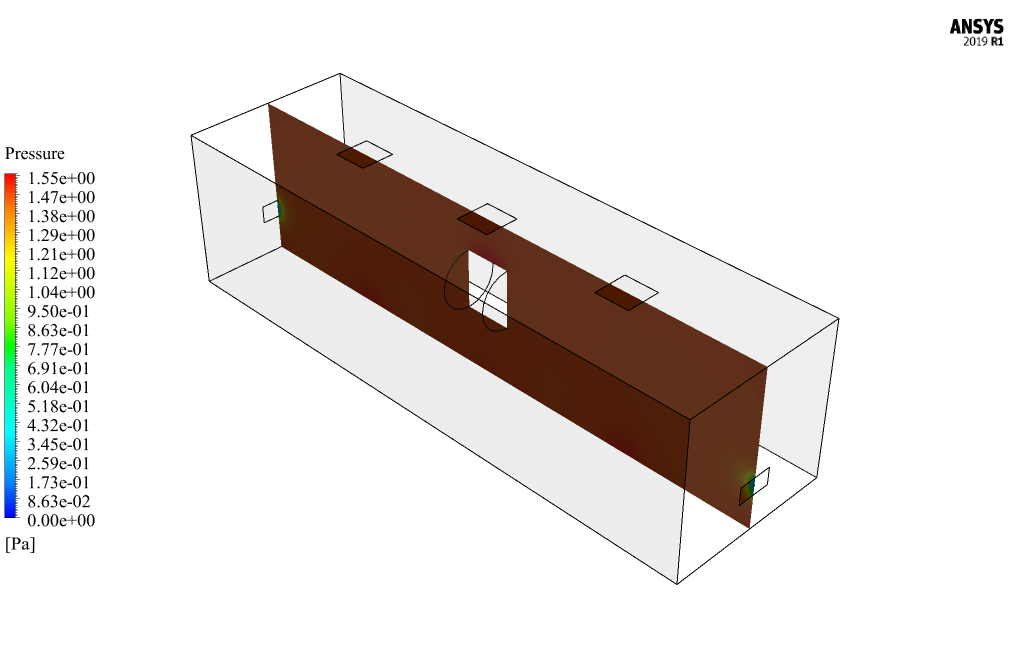
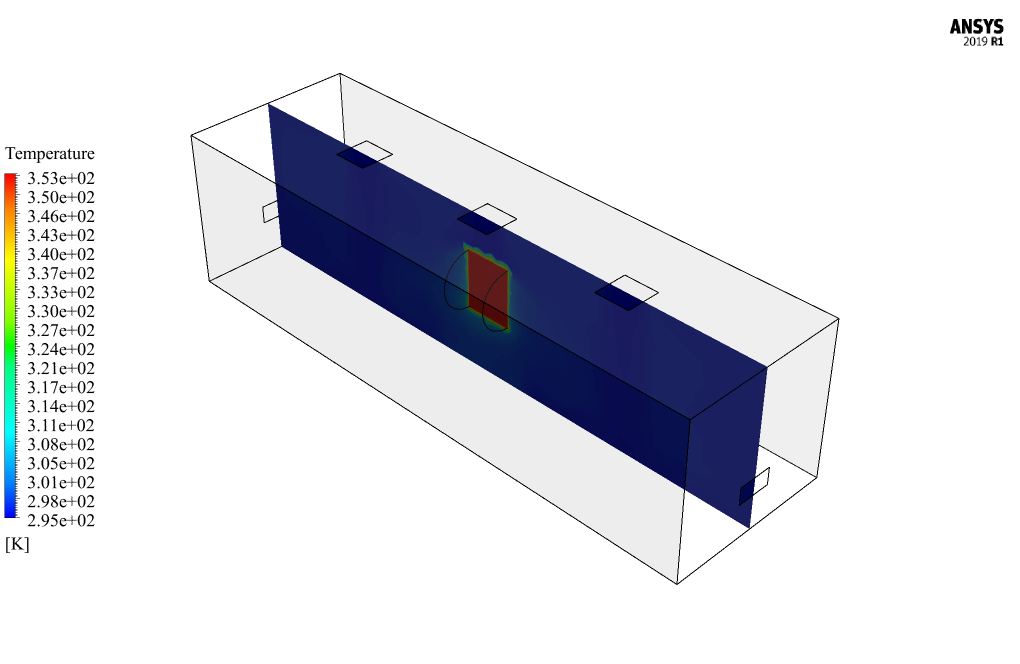
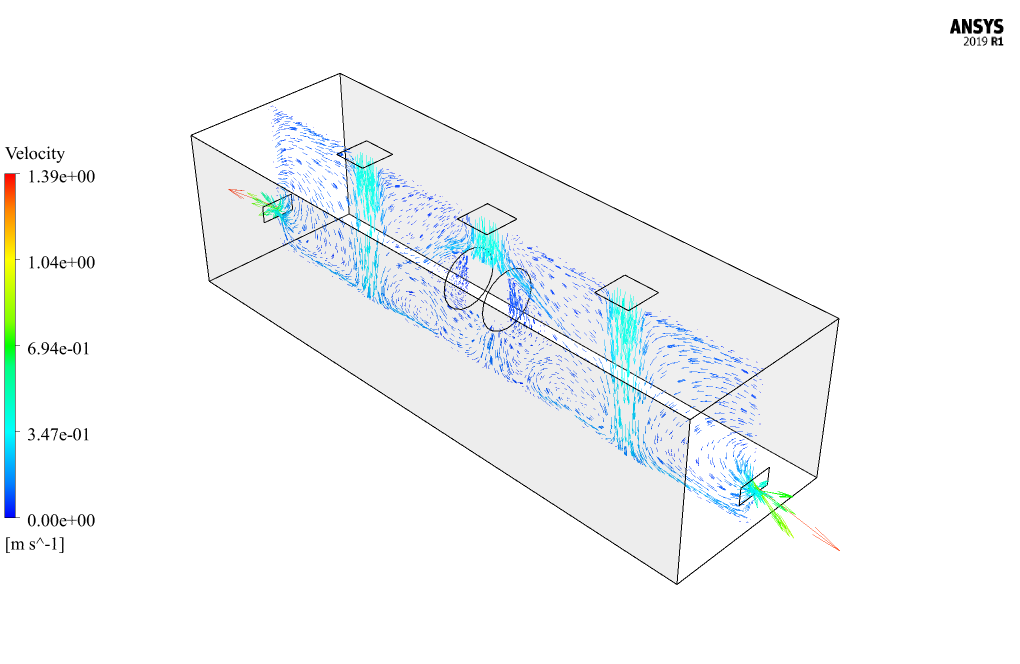
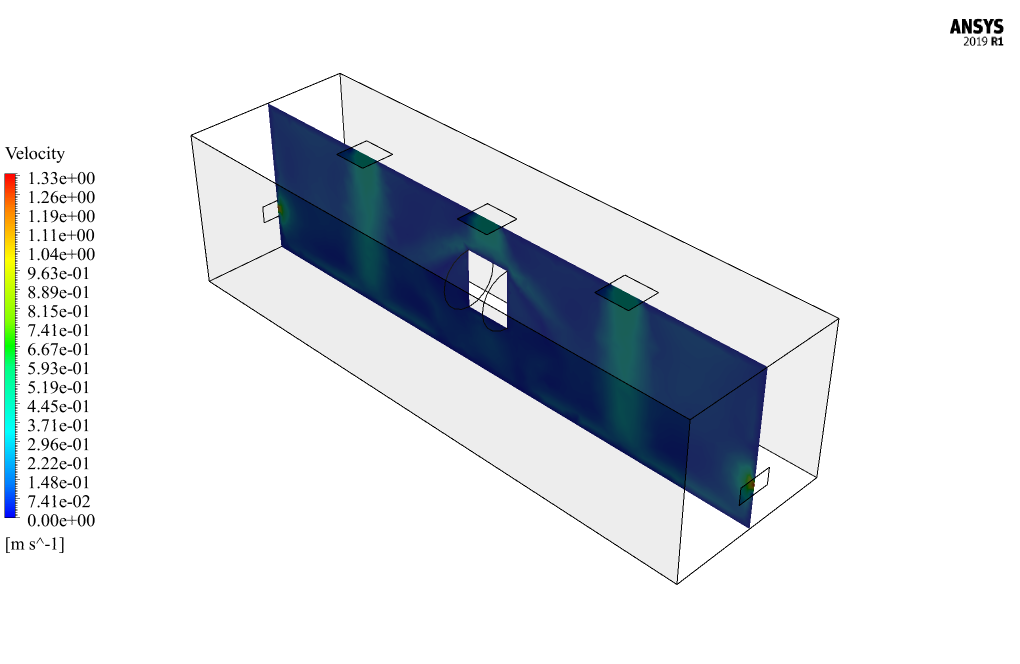
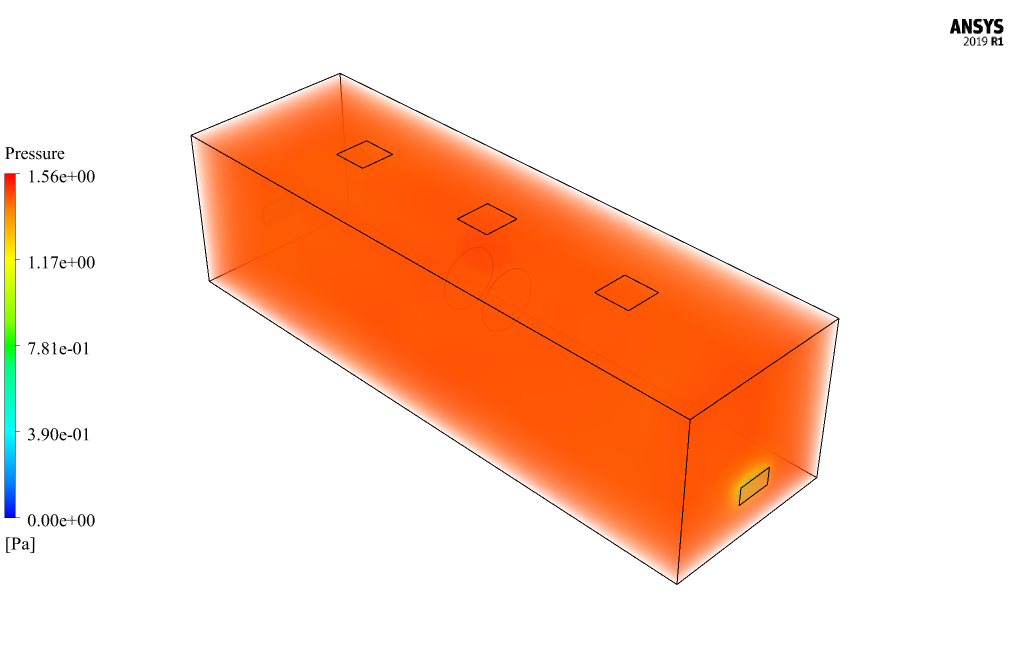
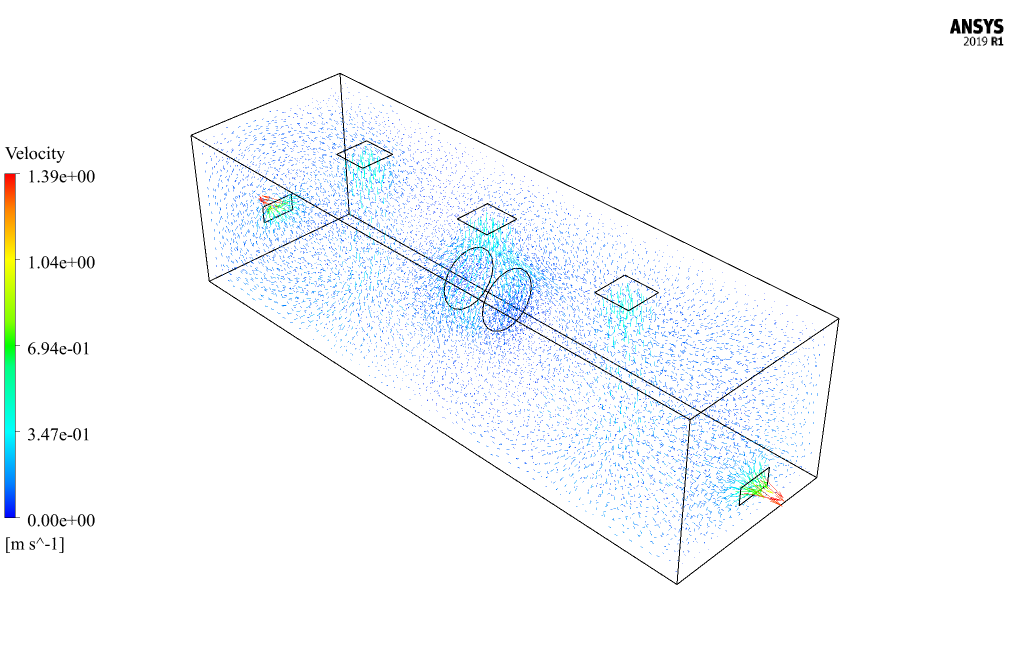
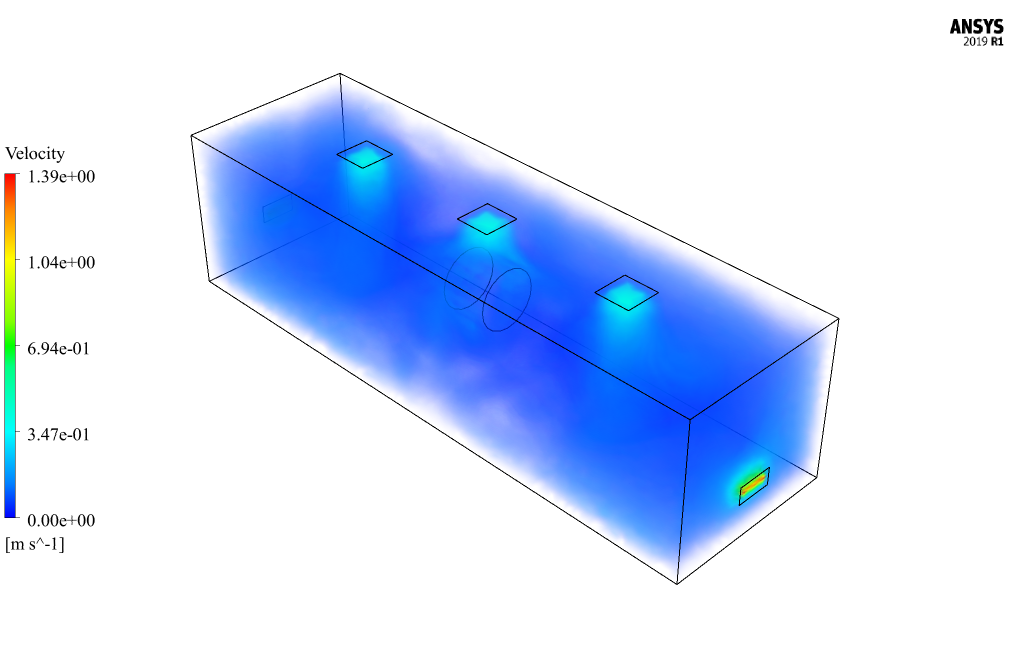
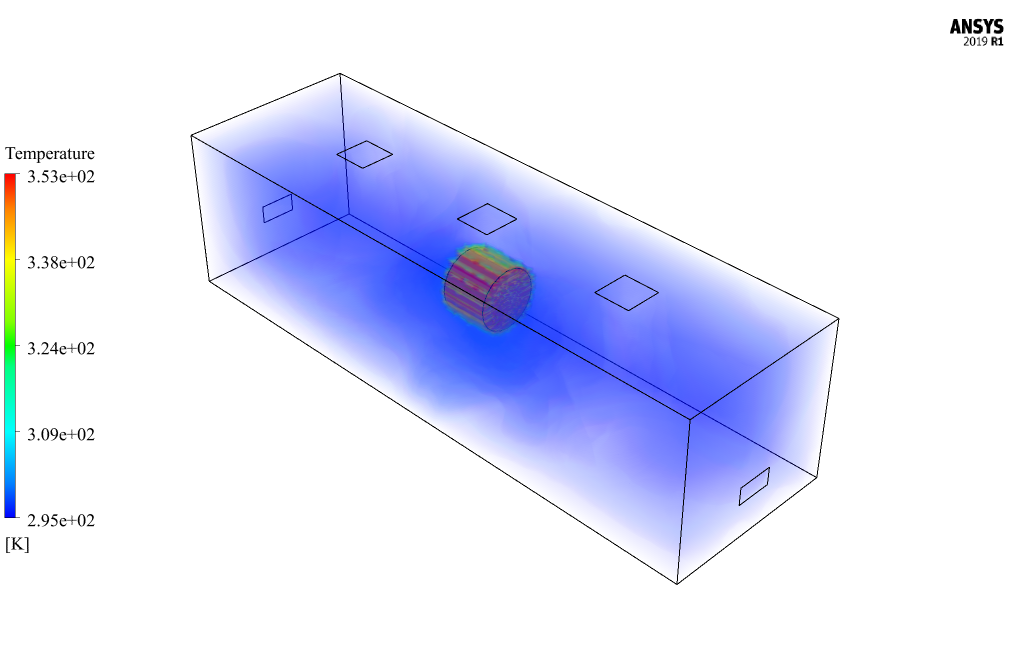
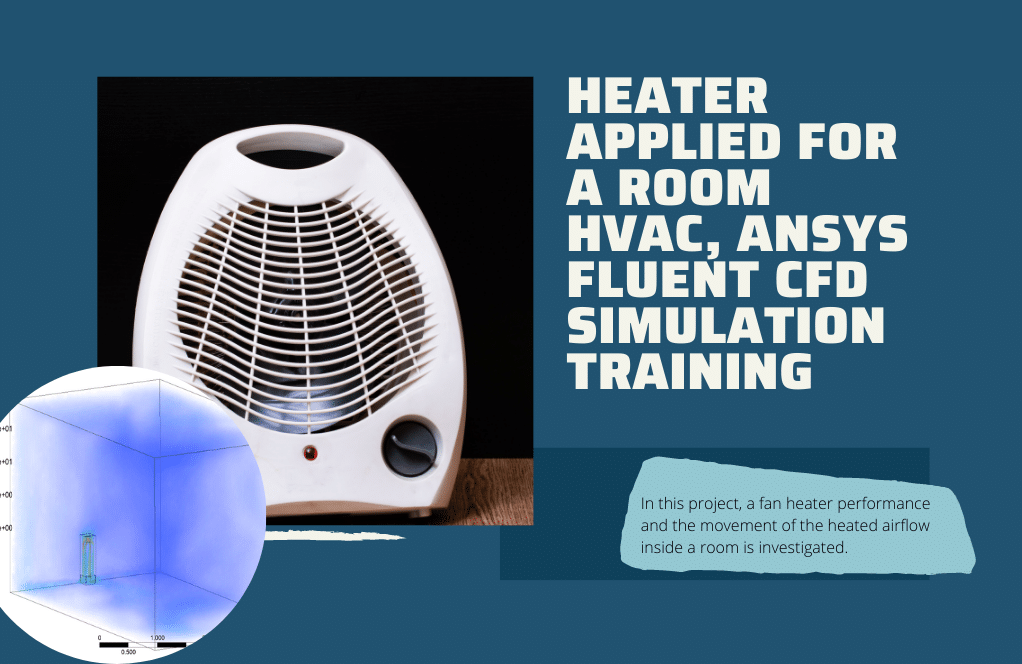

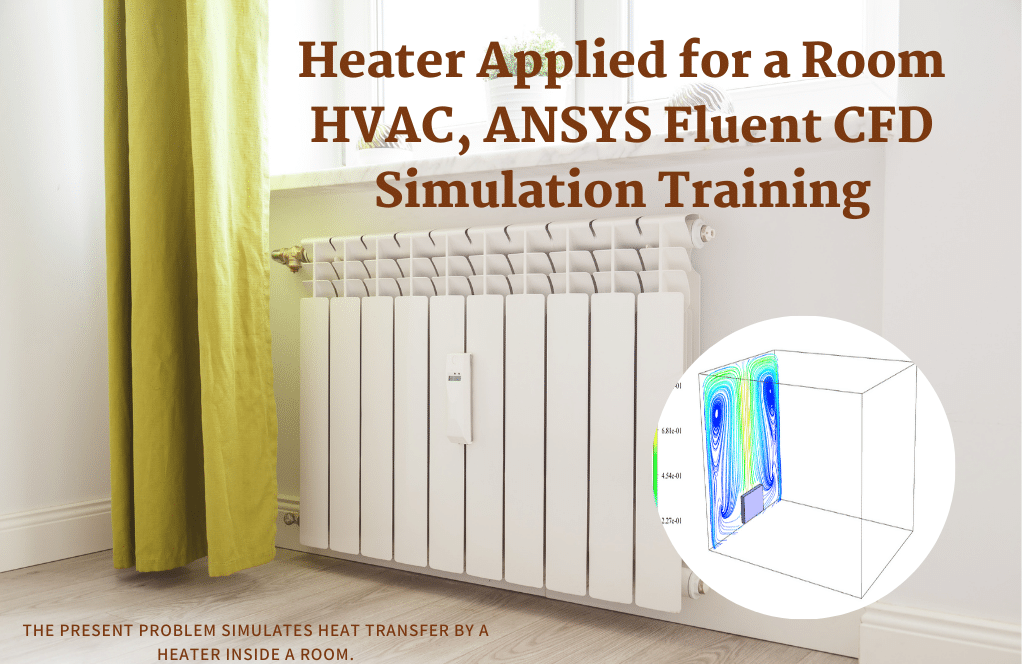
Quinton Herman I –
This Air Conditioning CFD tutorial was comprehensive. The visuals helped me understand how the airflow and temperature distribution change within a room due to the heat source.
MR CFD Support –
Thank you for your feedback! We’re glad to hear the Air Conditioning CFD tutorial was helpful and the visuals made the concepts clear for you. If you need more information or assistance with other simulations, feel free to reach out.
Brain Crooks Sr. –
After doing this simulation, were you able to identify any areas within the room that might have issues with cooling or heating more so than other areas?
MR CFD Support –
Thank you for your feedback. The air conditioning CFD simulation is designed to identify areas with potential heating or cooling issues, such as uneven temperature distribution or poor airflow. By studying the temperature contours and velocity vectors, you can pinpoint parts of the room where air does not circulate effectively or where the heat from the source affects the temperature more intensely.
Cordia Fahey –
I have gone through your simulation and solution process for the air conditioning of a room with a heat source. The images of the two-dimensional and three-dimensional contours are incredibly informative. It helped me grasp how the heat source influences the room temperature and how effectively the AC system works. Great job demonstrating the airflow dynamics within the room as well!
MR CFD Support –
We’re delighted to hear that our simulation of the air conditioning with a heat source provided a clear understanding of the airflow dynamics and temperature distribution in the room. Thank you for your positive feedback on the contour visualizations. We strive to ensure our simulations are both informative and practical. Your appreciation means a lot to us!
Favian Adams –
I’m impressed with how well the CFD modeling handled the airflow and thermal behavior in the simulated room. The simultaneous display of temperature gradations around the cylindrical heat source as seen in the contours is extraordinary!
MR CFD Support –
Thank you for your positive feedback! We’re delighted to hear that our CFD simulation gave you clear insights into the airflow dynamics and thermal profiles within the room. Our goal is to provide accurate and intuitive representations of complex physical phenomena, and we’re glad to see it’s achieved in this project!
Dr. Devyn Gaylord –
Really impressed with the level of detail in the airflow and temperature distribution predictions. The applied methodology clearly illustrates the effectiveness of air conditioning in a heated environment.
MR CFD Support –
Thank you for your positive feedback! We’re glad to hear that the detail and precision of our CFD simulation for air conditioning with a heat source met your expectations.
Mr. Jettie Cassin –
I’m impressed by the detail in the simulation of air conditioning in a room with a heat source. The setup you’ve described seems robust. Does the implemented model account for different seasons while still maintaining the indoor temperature, or is it tailored to a specific environmental scenario?
MR CFD Support –
Thank you for your interest in our project. The model as described is tailored to a specific scenario with fixed boundary conditions but not for varying seasonal temperatures. In real-world applications, the model could be adjusted to simulate different environmental conditions by modifying the initial temperatures and heat loads to match seasonal changes.
Cooper Boyer –
This was a comprehensive simulation that really helped me understand the dynamics inside an air-conditioned room with a heat source. The visualizations from the contour lines were also pretty useful for grasping the temperature variations. Great job on providing such a detailed insight!
MR CFD Support –
Thank you for your positive feedback! We’re delighted to hear that the simulation was effective in enhancing your understanding of thermal dynamics in an air conditioned space. It’s our goal to provide clear and comprehensive insights. Your appreciation means a lot to us!
Dakota Cummerata –
This project appears to have been perfected by the team at MR CFD. I recently finished this lesson and was seriously impressed with thoroughness. Well done!
MR CFD Support –
Thank you for your kind words! We’re pleased to hear that you are impressed with our Air Conditioning of a Room with Heat Source CFD Simulation project and found our tutorial thorough. It’s always rewarding for us to receive positive feedback from our customers. If there’s anything else you need or another area you’re curious about, don’t hesitate to explore our other tutorials.
Makenzie Auer –
I’m delighted with the clarity provided in the provided temperature contours in your air conditioning simulation. Thank you for an excellent product!
MR CFD Support –
We’re thrilled to hear that you’re pleased with our simulation results and the clarity of the temperature contours! Thank you for taking the time to share your positive feedback. If you need any further assistance or information on our CFD products, do not hesitate to reach out.
Darian Padberg –
I am very impressed with the way the room’s airflow and temperature distribution was simulated with the heat source. Can you provide more details on how the simulation results explained the effectiveness of the air conditioning system in the room?
MR CFD Support –
Thank you for your kind words! The simulation results provide detailed information on temperature and airflow distribution within the room. They show the temperature gradient caused by the heat source and how the air conditioning system manages to maintain a uniform temperature across the room by supplying fresh, cooler air. The results help in understanding the capability of the air conditioning system to offset the heat produced by the source, ensuring a well-regulated indoor environment.
Dr. Verner Heller –
I’m impressed by how detailed the simulation appears to be. Great job on visualizing airflow and temperature distribution around the heat source in an air-conditioned room!
MR CFD Support –
Thank you for your kind words! We’re glad to hear that the simulation details and visualization met your expectations and provided valuable insights into the air conditioning process.
Dr. Vivienne Bahringer –
I am really impressed with the detailed analysis and results presented for the air conditioning simulation. Great job!
MR CFD Support –
Thank you for your kind words! We’re thrilled to hear that our detailed simulation and analysis exceeded your expectations. Your feedback is very valuable to us.
Laverne Stamm –
Great simulation details! Can you tell me what the specific reasons are for using the k-epsilon turbulence model in this context?
MR CFD Support –
The standard k-epsilon model is an effective and widely-used turbulence model suitable for simulating the average effects of turbulence, especially for indoor airflow like air conditioning simulations. Its popularity is due to its robustness, simplicity, and reasonably accurate results for a range of flows. It models the kinetic energy (k) of the turbulence and its dissipation rate (epsilon) to capture the effects of the turbulent eddies on the momentum and thermal transport, which are crucial in understanding and optimizing room air conditioning design.
Lincoln Pouros –
I am thoroughly impressed with how the heat distribution in different areas of the room has been rendered. The clear temperature contours give great insights for HVAC design!
MR CFD Support –
Thank you for your positive feedback! We’re delighted to hear the temperature contour visualizations have provided valuable insights for HVAC design. Your satisfaction with our CFD simulation is our top priority, and we look forward to continuing to assist you with our products and services.
Elsie Dicki –
I’m so pleased with the air conditioning simulation from MR CFD! It expertly demonstrates temperature regulation in a room. I was especially fascinated by how the heat source impacts the surrounding air’s temperature. Very insightful CFD analysis!
MR CFD Support –
We’re thrilled to hear that you are satisfied with the air conditioning simulation project and that you found the analysis on the heat source’s effect on air temperature insightful. Thank you for your positive comments!
Miss Kaitlyn Little –
The product helped me to fully understand the air conditioning process in a heated room, particularly with the inclusion of a cylindrical heat source. The visuals of the temperature contours and velocity vectors greatly contributed to solidifying my comprehension of the airflow patterns and heat distribution. Exceptional and enlightening!
MR CFD Support –
Thank you for your positive feedback! We are thrilled to hear that our simulation could enhance your understanding of the air conditioning process and heat distribution in a room. We’re always glad when our visuals and simulations can provide a clear and helpful insight into complex fluid dynamics. If you need any more assistance or information about our future products, feel free to reach out. We appreciate your support!